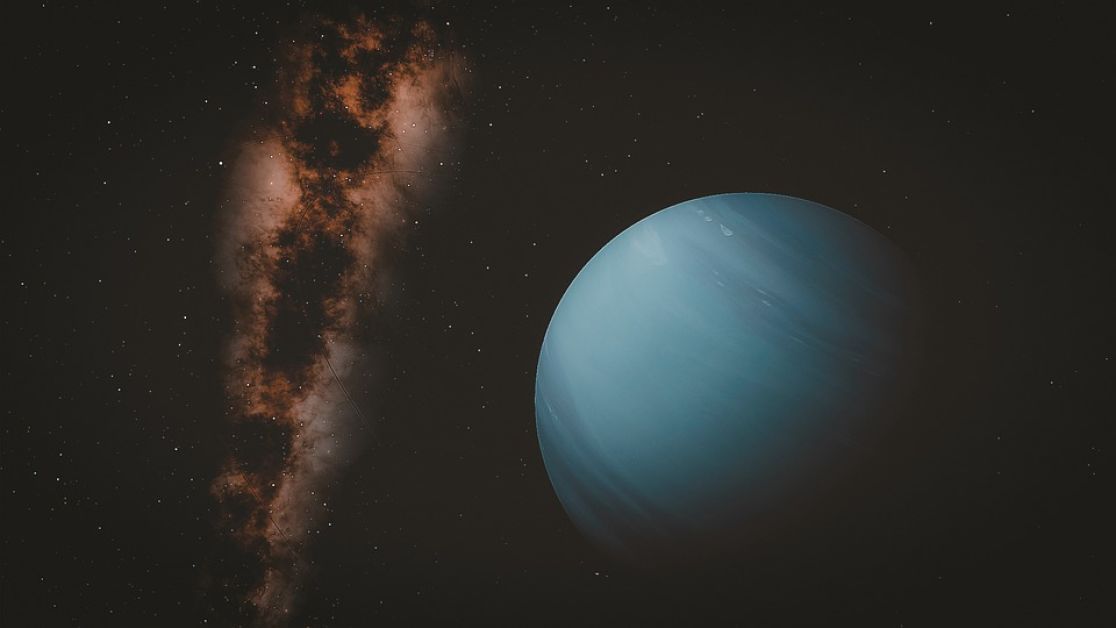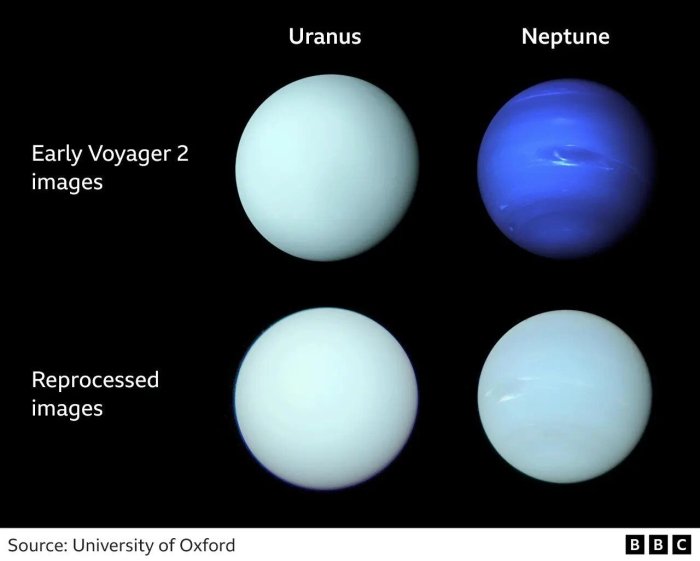
The ideas about the colors of the planets Neptune and Uranus were wrong, according to research conducted by British astronomers.
In the images of the 1980s space mission, Neptune was a deep blue color, and Uranus was green. But the study showed that the two icy giant planets have the same shades of greenish-blue color.
It turned out that early images of Neptune were enhanced to show details of the planet’s atmosphere, which changed its true color.
They did what I think everyone on Instagram would do at some point in their lives: they tweaked the colors,” said Katherine Heymans, a professor of astrophysics at the University of Edinburgh. They emphasized the blue color only to show the features that can be seen in Neptune’s atmosphere, and that’s why the image is very blue, but in reality Neptune is very similar to Uranus.
According to Professor Patrick Irvine of Oxford University, who led the study, astronomers have long known that most modern images of the two planets do not accurately reflect their true colors.
Even though the artificially saturated color was known among planetary scientists at the time-and the images were published with captions explaining it-the distinction was lost over time.
Dr. Robert Massey, Deputy Director of the Royal Astronomical Society, explained that image enhancement is a common procedure in astronomical research.

It would be ridiculous to look at an astronomical image and not think that it has been improved. That’s the way it should be, because that’s how they are processed to see things. It’s not that there was some kind of conspiracy to hide it from the public.
Prof. Irwin and his team processed the raw data to produce what is claimed to be the “most accurate representation” of the color of Neptune and Uranus.
The initial error arose because the images of both planets, obtained by NASA’s Voyager 2 spacecraft, contained images in three different colors.
The images were recombined to create complex color images that were always precisely balanced. Contrast has also been greatly enhanced to highlight the details of the planets’ clouds, stripes, and winds. In the case of Neptune, both processes made it appear bluer than it really was.
In a recent study, scientists used data from the Hubble Space Telescope Imaging Spectrograph and the Multiband Spectroscopic Imager on the European Southern Observatory’s Very Large Telescope.
In both instruments, each pixel is a continuous spectrum of colors, allowing researchers to reproduce the true colors of both planets.
The analysis showed that Uranus and Neptune have a similar shade of greenish-blue, although the researchers found a slight difference. Neptune has a slight hint of additional blue color, which the model shows is due to a thinner layer of haze on this planet.
The study also showed that Uranus is slightly greener in summer and winter when one of its poles is facing the Sun. But in spring and autumn, when the Sun is over the equator, it has a bluer hue.

